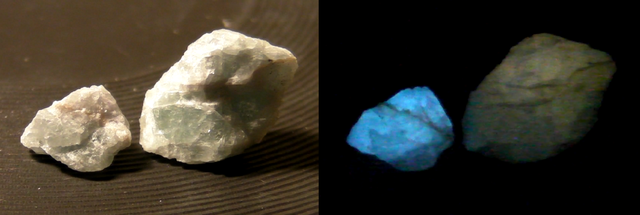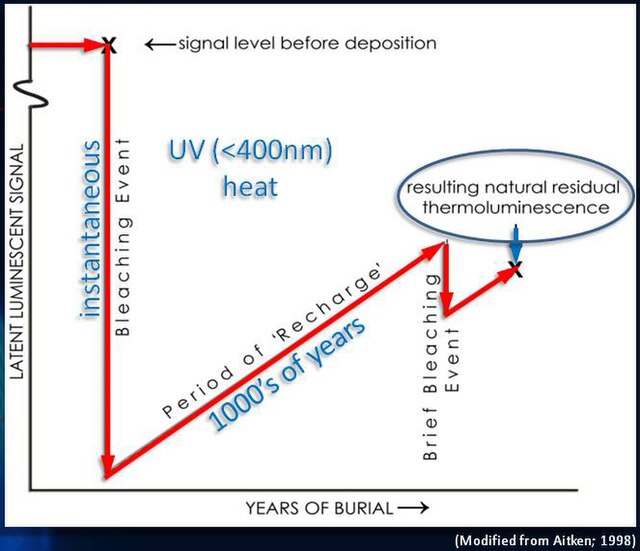热释光
来自维基百科,自由的百科全书
热释光(英语:Thermoluminescence,缩写为TL)效应,有时也被译作热致光、热发光,是一种冷发光现象:一些晶体(例如矿物质)在被加热时,原来吸收并储存在晶格缺陷中的电磁辐射或其他电离辐射会以光子的形式释放出来。该现象不可与黑体辐射(也可称为热发光)混淆。
此条目没有列出任何参考或来源。 (2013年12月1日) |

常见应用有热释光测年法。
物理

高能辐射会使晶体材料内产生电子激发态。 在一些材料,这些电子透过晶格的局部缺陷或不完整,被捕获而长期保存下来。 量子力学上,这些量子态是与时间无关的定态,但他们并不稳定。 加热材料将使捕陷态位(trap states)能够与声子相互作用,即晶格振动,在迅速衰减至较低能态的过程中发射光子。
Wikiwand - on
Seamless Wikipedia browsing. On steroids.
